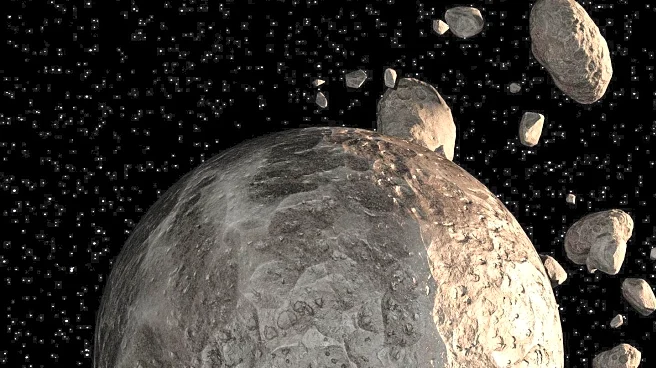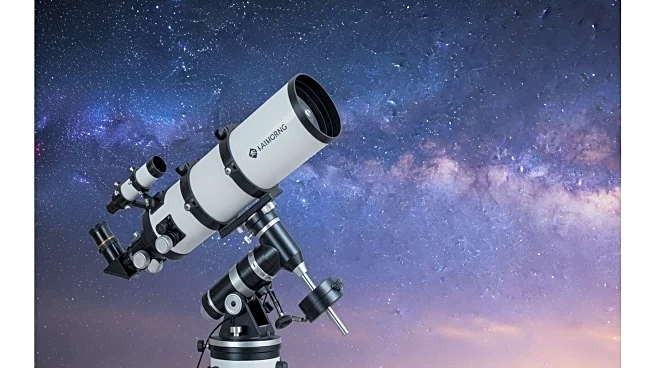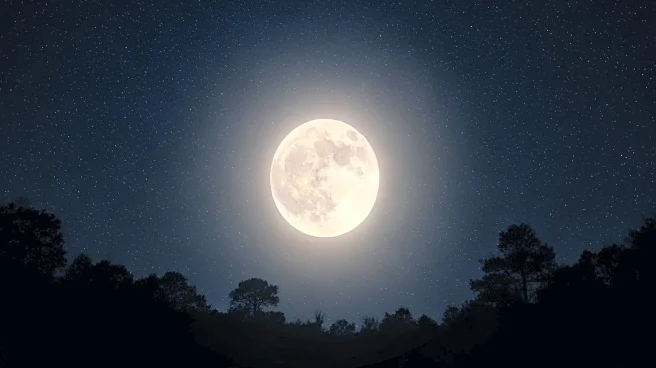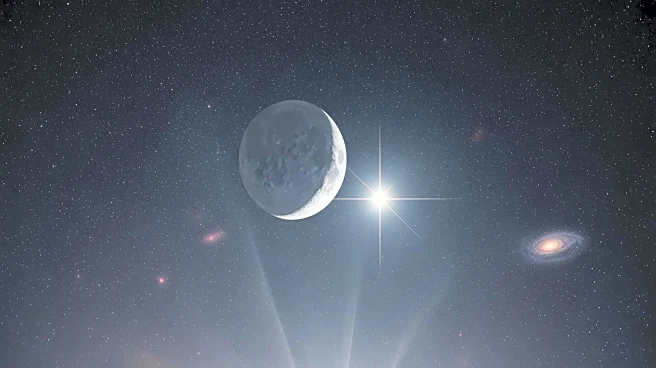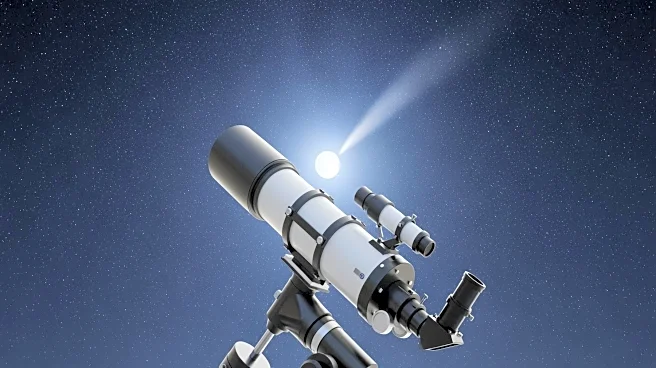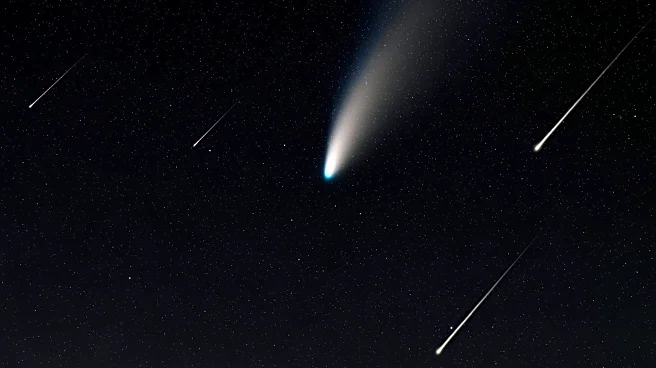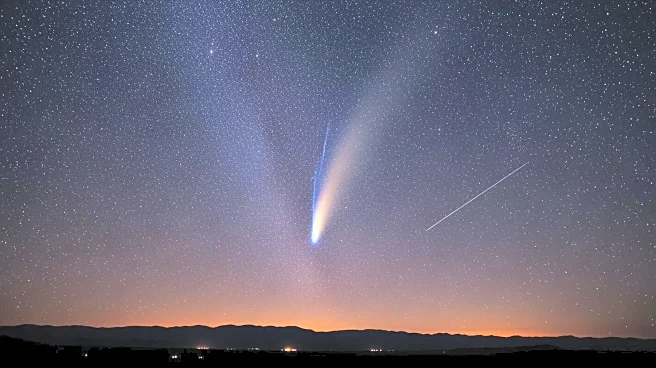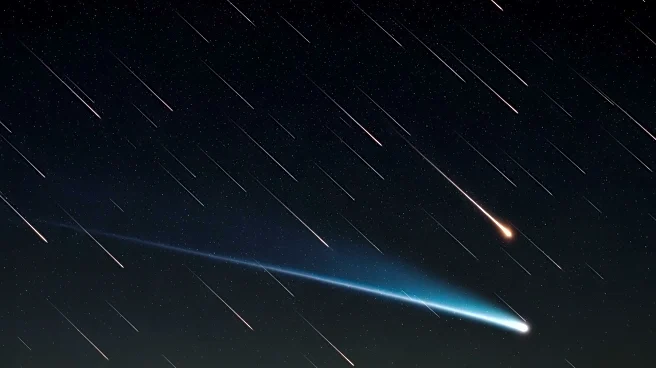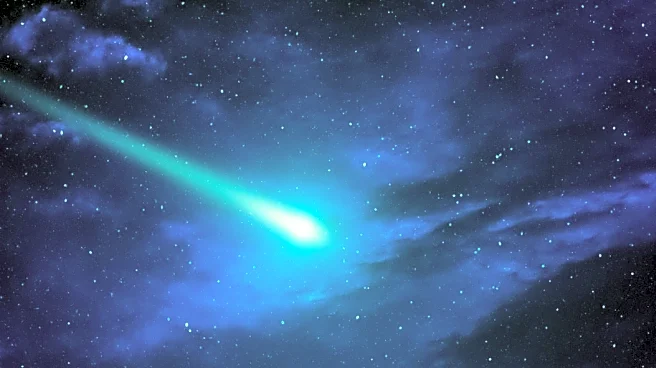What's Happening?
This week, several astronomical events are set to captivate sky watchers. Saturn's moon Iapetus will be prominently visible as it reaches inferior elongation, appearing near Saturn. Additionally, a dual
shadow transit of Jupiter's moons Io and Europa will be observable from the U.S. West Coast. Mercury reaches its greatest eastern elongation, providing a viewing opportunity alongside Mars and Antares. The week also features the progression of the Moon from a waxing crescent to the First Quarter, and the visibility of deep-sky objects like the Andromeda galaxy.
Why It's Important?
These celestial events offer unique opportunities for both amateur and professional astronomers to observe and study planetary movements and alignments. The visibility of Iapetus and the shadow transits on Jupiter provide insights into the dynamics of these celestial bodies. Observing Mercury's elongation and the Moon's phases can enhance understanding of planetary orbits and lunar cycles. These events also serve to engage the public in astronomy, fostering interest and education in the field.
What's Next?
Observers are encouraged to take advantage of clear skies to view these events, particularly the shadow transits and Iapetus' visibility. As the week progresses, the alignment of planets and the Moon's phases will continue to offer viewing opportunities. Future astronomical events will include more planetary alignments and lunar phases, providing ongoing opportunities for observation and study.
